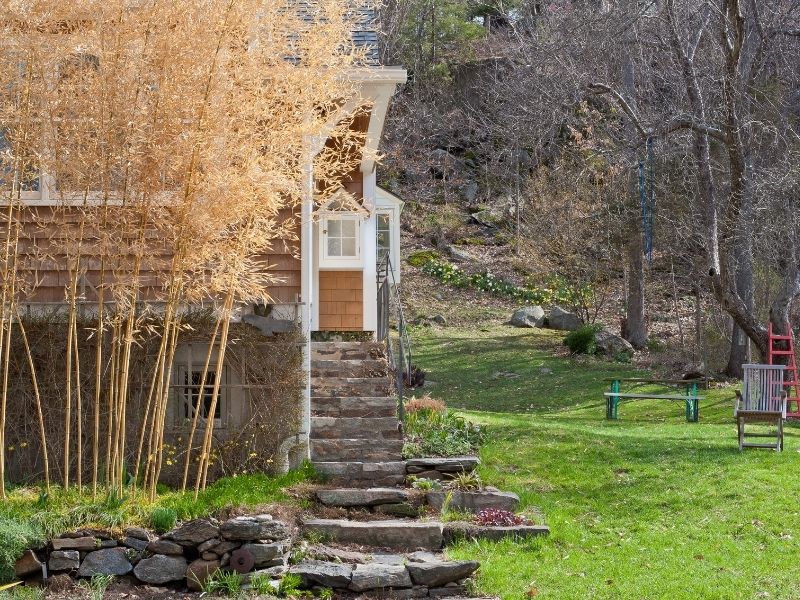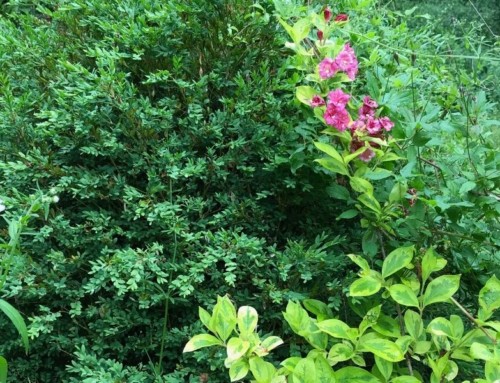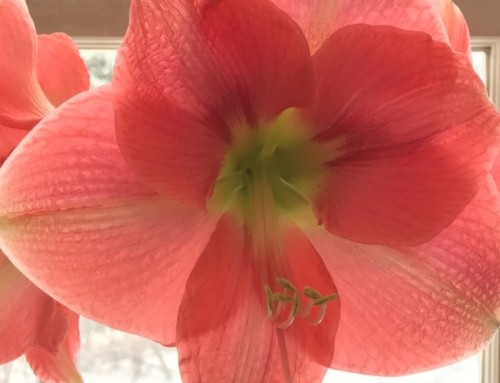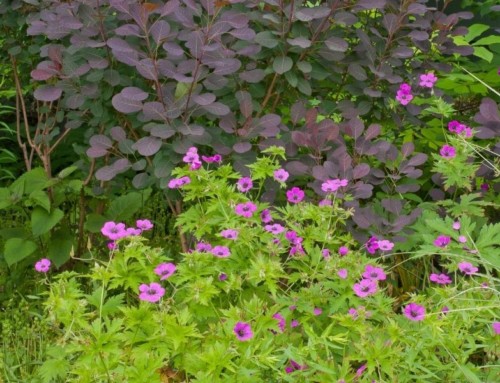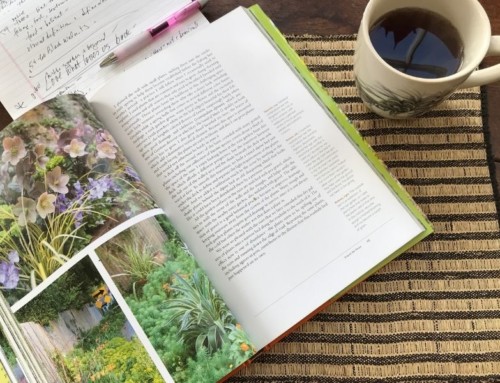We all fall in love with plants – and then at some point, we’re so over it.
I’ve loved and lost many plants over the past 30+ years.
But I’ve loved and tossed plenty of them too.
Sometimes a plant just isn’t as interesting as I first thought. Or it was a hot new release that just didn’t pan out. Or it panned out all too well.
I’ve grown as a gardener.
My tastes have changed. And I’ve developed higher expectations for the plants I invite into my yard. Aesthetic appeal is important, but there’s much more to consider.
Goodbye to beautiful thugs – unless they’re native plants that support wildlife and solve problems rather than create them.
As a young gardener I suffered under the delusion that Chamaeleon plant (Houttuynia cordata) and Bishop’s weed (Aegopodium podagraria), a now notorious invasive plant, would make a lovely tapestry. Silly me.
Wish I had known then that Houttuynia (aka “fish mint”), a plant with gorgeous vibrant tricolor leaves, was a vegetable, spice and medicinal herb in its native Southeast Asia.
I would have enjoyed cooking with it had I known – and not been so busy ripping it out.
One blog that often comes up first on google describes it as a “colorful groundcover” that “needs little encouragement.” Understatement of the year.
The writer advises “sprigs growing out of the designated area should be removed at the rhizome” as though that took just an easy flick of the wrist.
Further down on the same google page, another entry started “why won’t this plant die?”
It took me years of pulling and smothering to remove those damned rhizomes.
I recently saw Chamaeleon plant growing in a container set on a ledge in a water garden. It was perfectly alluring, perfectly contained. Right plant, right place.
Gold-Stemmed Bamboo (Phyllostachys aureosulcata ‘Spectabilis’)
It was love at first sight. Every golden section seemed hand painted with green stripes, a different pattern in each internode.
I planted one prized pricey specimen in the raised bed against the front of my house. It sent up fresh 12-15′ shoots each spring, quickly filling the whole bed.
Why I loved this plant
- Trimming lower woody leaf stems let me enjoy the beautiful striped culms, some of them zig-zaggedy, at ground level.
- I thinned upper leaves just a bit, so that I could see through from the living space one flight up. It felt very secret.
- Leaves filtered strong sun that bakes my south-southwest facing windows, cooling the house.
- Attractive, willowy olive-green leaves turned a lovely buff and hung on all winter, dropping as new leaves emerged.
- The bamboo grove added movement and sound. Flickering light shining through the leaves made entertaining patterns on the ceiling and walls. Leafy images flitted in and out of focus as light changed and plants moved.
- Deer did not eat it.
- I now have a lifetime supply of garden stakes with woody side-branches.
Why I tossed it
- It did not remain confined inside the retaining wall. When it came up on the far side of 4′ wide stone steps and poked through my asphalt driveway, I knew I had to face the facts.
- Never once did I see a bird or an insect use this plant, not even in passing.
- On windy spring afternoons, sunshine strafing through thrashing foliage triggered security system motion detectors. Inevitably I’d get the call that police had been dispatched when I was far from home.
- It had lost its charm because it hardly ever changed, except for leaf color.
- I knew it would be an enormous, time-consuming, years-long process to dig it out (by hand, without chemicals, aided by teakettles of boiling water), and it sure was.
The staghorn sumac I replaced it with spreads by rhizomes too.
But it’s easy to snap off shoots where I don’t want them and prune when it gets too big.
Sumac changes so much throughout the year and is so buzzing with life, I can forgive its faults.
Read all about it in last September’s Staghorn Sumac Blog Post
I’ve learned to value plants not just for what they look like, but for what they do.
